Why did India choose the UK for the FTA deal?
RN Bhaskar
Image generated by https://www.bing.com
On the same day when India launched a surgical strike against “terrorist camps” in Pakistan, came the announcement that this country had finally signed an FTA or Free Trade Agreement deal with the UK. This was in the works for over three years, and in May this year the agreement finally got signed.
Normally, when such deals are signed, one first goes through the list of products that would benefit, and the trading background of the countries involved. Kudos to the UK for providing a document – which it does periodically – dated 2 May 2025 (https://assets.publishing.service.gov.uk/media/681384a770b095d0d701185d/india-trade-and-investment-factsheet-2025-05-02.pdf)
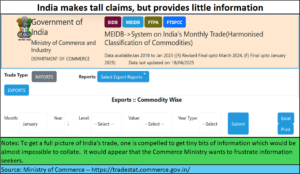 But when you try to get similar data from the government of India, the website of the Commerce ministry (https://tradestat.commerce.gov.in/) You are left flabbergasted. The website asks you to specify the commodity/item, the year, the month, and provides you the specific information – there is no provision for a full picture for all commodities, all months, for the past few years.
But when you try to get similar data from the government of India, the website of the Commerce ministry (https://tradestat.commerce.gov.in/) You are left flabbergasted. The website asks you to specify the commodity/item, the year, the month, and provides you the specific information – there is no provision for a full picture for all commodities, all months, for the past few years.
So, what was UK’s trade with India? The UK government makes this data available to researchers, and economists, in a succinct manner in its periodic reports. Should one need to delve further, the UK government has websites which provide such information as well. After all, trade data is no state secret. This can be got from UNCTAD as well. In fact, when countries make available data about themselves, it helps boost their image for transparency and efficiency.
The agreement states that “India will gain from tariff elimination on 99% of of tariff lines for almost 100% of the of the trade value”. Then why not list out the remaining 1% that has been excluded? Since only 1% is not permitted, it would have been easier to mention “all except these items”,
Similarly, the agreement says that India will remove or reduce tariffs, or pre-existing zero tariffs, on 90% tariff lines, which will cover 92% of existing goods from the UK (as reported by the Economics Department of Bank of Baroda’s excellent report dated 8 May 2025 on ‘What the FTA with UK means’). Why has the negative list not been specified.
This is important because, with all such agreements, the devil lies in the fine print. More disclosure is required.
One more grey area – are there any non-tariff barriers (NTBs) in place for some items?
Now compare the UK disclosure of trade figures with India’s disclosures (https://tradestat.commerce.gov.in/). The data made available by the Commerce Ministry of the government of India is extremely fragmented and sketchy. You can get more of the information you requirefrom the nation’s central bank – the Reserve Bank of India (RBI).
One reason why the RBI can do this is because no minister is technically in charge of the data that the RBI provides. Another reason is that the RBI understands with much more acuity, how the wheels of commerce and money work better when crucial information relating to the Indian economy being made available. So, you get information on agriculture, currency notes, export-import, even standards of living. This is information which the concerned ministries ought provide, but do not. That is sad, and short-sighted. Even counterproductive.
But what is quite perplexing is that India decided to pursue the UK for an FTA. The UK is not India’s largest trading partner. Normally, FTAs are first signed with the largest trading partners, not with countries that come 19th on the list of trade partners.
So why was the UK chosen?
- Was it because of the tremendous trade potential that this country offers? Do bear in mind that the UK too has a negative trade balance and would like to restrict imports. Or could it be because India’s policy makers still enjoy a fondness for the UK, even though it plundered India during the British Raj days, and even later.
This is unfortunate because, today, UK (along with many Western countries) is on the decline economically (free subscription — https://bhaskarr.substack.com/p/the-west-stumbles-brics-in-the-ascendant). Its finances are in a worse shape than India’s. Moreover, if one compares the G-7 with the BRICS (free subscription — https://bhaskarr.substack.com/p/india-china-and-russia-could-be-dancing), it is obvious that the BRICS and ASEAN groups are growing faster than the G-7 or countries.
- Or was it India’s move to get favourable judgements from the UK government and its courts. India desperately wants judgements against people like Vijay Mallya, Nirav Modi and Devas Multimedia, among others. It may be sheer coincidence but Devas Multimedia had a minor setback from UK courts on 7 May 2025 — the courts refused to grant him state immunity — https://riskandcompliance.freshfields.com/post/102ka2j/cc-devas-v-india-english-high-court-finds-that-ratification-of-the-new-york-conv
One would have expected India to focus on large and rapidly growing countries and not on countries that rank 19th on the list of India’s trading partners. Logically, one should be looking at the top 10.
- Could the reason be that in spite of public posturing on driving away the colonial mindset, India’s policymakers still hanker with photo ops and favours from the erstwhile colonial masters (free subscription — https://bhaskarr.substack.com/p/will-india-be-marginalised)?
It is worth remembering that India took the unusual – many say unwise – step of even throwing out its Indian Penal Code (IPC) and replacing it with the Bharatiya Nyaya Sanhita (BNS). At that time, the government said that India must shed its colonial mindset (https://bhaskarr.substack.com/p/indias-agriculture-under-immense). Government spokespersons reminded common folk that Lord Macaulay drafted the IPC. India needed a penal code of its own.
Sadly, legislators did not pay attention to a big problem. Tinkering with the penal code is bound to result in a storm of litigation as new caselaw had to be created for the newly drafted sections, which in turn would result in more litigation. Each judgement of the past would have to be scrutinised with additional notes on the old provisions, and what the new provisions entail. Clearly, India’s stated distrust of the colonial legacy appeared to be strong enough to throw such legal caution to the winds.
So why has the distrust of the colonial culture been forgotten now? If colonial culture could allow for the jettisoning of the old and trusted IPC, surely the Parliament and India’s citizens need an explanation for courting the colonials once again (remember they plundered India — https://www.youtube.com/watch?v=8mkn82F_iw0&t=2s.
The “colonial” excuse is used even to tinker with school textbooks (free subscription — https://bhaskarr.substack.com/p/the-one-eyed-vision-of-ncert). The use of the colonial argument has become a joke.
Business Standards writes (https://www.business-standard.com/economy/news/india-uk-seal-free-trade-deal-pm-modi-calls-it-historic-milestone-125050601238_1.html): “India has reduced import tariffs on whisky and gin from 150 per cent to 75 per cent, before slashing them to 40 per cent by year 10 of the deal. Automotive tariffs will go from over 100 per cent to 10 per cent under a quota. India has also provided tariff concessions on cosmetics, aerospace, lamb, medical devices, salmon, electrical machinery, soft drinks, chocolate, and biscuits.”
But in the absence of numbers (even estimated projected numbers will do), it is difficult to say if this FTA is good for India or not. But given past experience, UK has a habit of pulling wool over India’s eyes. One of the best instances of this was the aggressive sale of 27 Westland-30 helicopters (https://www.thehindu.com/news/national/Britain-overtly-linked-Westland-deal-to-aid-U.K.-documents-show/article60334428.ece). It was a deal worth 65 million pounds. But at least a couple of the helicopters crashed and caused deaths. Investigations showed that the cost of repairs would turn out to be larger than the cost of acquisition. Finally, these helicopters were later withdrawn from service in 1991 and subsequently sold for less than a million pounds.
It was a deal that was rotten from the word “Go” (https://www.indiatoday.in/magazine/indiascope/story/19881031-controversy-over-indias-purchase-of-westland-helicopters-is-not-about-to-fade-away-797837-1988-10-30). Engine problems included worn-out rotor blades, spurious clutch drums, oil leakages, and failures in the electronic engine control unit. These helicopters had earlier been grounded by the US Government as well. So how India’s policy makers be persuaded to bring them into commercial service?
Missing BIT
Moreover, it must be noted that this FTA is without the Bilateral Investment Tre4aty which allowed for international arbitration (https://asiaconverge.com/2020/01/arbitration-and-investment-protection/). So, if there is a dispute, will it get resolved under UK laws or under Indian laws? That too needs to be clarified.
Or was the government using the UK FTA to persuade EU and USA to sign similar agreements? This is not the first time that the government has tried to use smaller countries to pave the way for persuading larger countries. It tried that with the new clause on arbitration (https://asiaconverge.com/2020/01/arbitration-and-investment-protection/) by getting Belarus and Cambodia to sign the deal. Is the government trying the same tactic again? But then, this gambit did not work with arbitration. The EU and many other countries have categorically stated that it would like the arbitration clause to be reinstated.
The FTA
The chart produced by Business Standard suggests cheaper prawn prices – then what about the prawn farms of Andhra Pradesh? It talks about easier travel.
Some say that the FTA will result in easier travel by businessmen. But what about the fact that, even currently, UK visas are currently among the most expensive in India. A five-year business visa costs over Rs.1 lakh.
And will the reduced duty on auto parts represent a crisis for Indian auto part manufacturers?
Yet another problem is UK’s carbon tax (https://indianexpress.com/article/explained/explained-economics/uk-india-fta-signed-key-highlights-trade-data-9986308/) . It was looking to impose a levy on metal imports based on carbon emissions, which would have hurt Indian exporters. Nothing has been said about that either.
All these are questions that people have. No answers are forthcoming. And the absence of a detailed press release giving details is what adds to the uncertainty.
One Indian sector that might benefit big-time is the one involved with apparels (https://www.financialexpress.com/policy/economy/apparel-units-upbeat-over-fta-see-extra-1-bn-market-in-uk/3836468/). The UK imports $18–20 billion worth of apparel annually. China accounts for 21% of the UK’s total apparel imports, followed by Bangladesh at 19%. Will India be able to grab this share? In the past, India has not always been successful in doing so. China and Bangladesh may have other strategies worked out. The government needs to come out with a white paper on this, in consultation with the association.
In conclusion:
It is good that India has signed an FTA deal. But why the UK? That will always remain a big question.
After all, India needs to diversify its trade to other countries. It would make more sense to begin with the largest trade partners, not one of the smaller ones. The penchant for India’s ministers and bureaucrats to go running to Europe or the US or New Zealand, is well known. It is time they begin to work with other countries.
But one thing is clear – the talk about shedding colonial ties is now proved to be more propaganda than a genuine belief. It is raised while promoting ideological isues. But raising the colonialism bogey has now become a joke. The county’s biggies do not always practice what is preached.
===============
Do watch my latest podcast on Demonetisation and Fake currency at https://youtu.be/g0J9Q4I8s5g
==================
And do watch our daily “News Behind the News” podcasts, streamed ‘live’ every morning at 8:15 am IST. The latest can be found at https://www.youtube.com/live/vZT2_96GXrY?si=66QIKOki__s9NgMV
==============




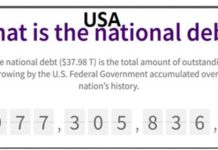







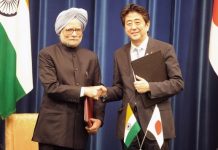
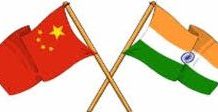






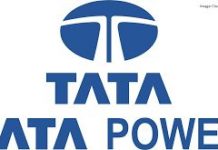
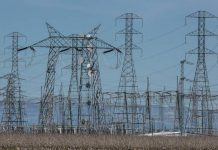

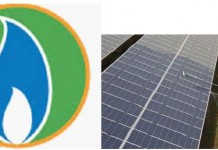





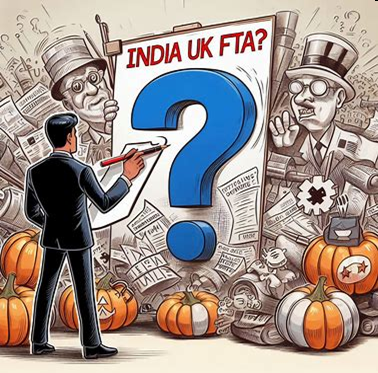
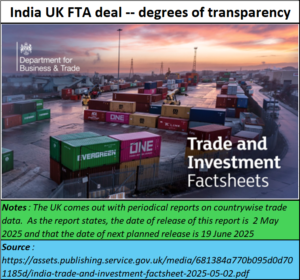
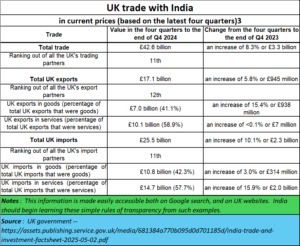
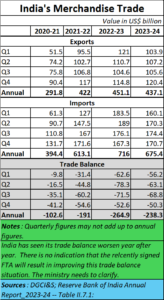
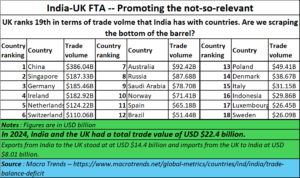
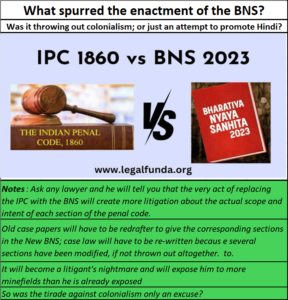
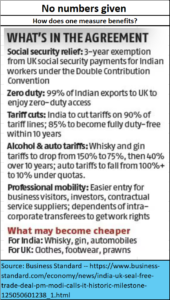







COMMENTS